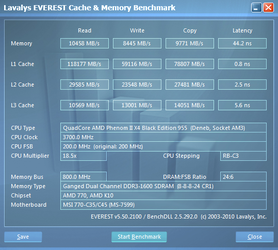OP
- Joined
- Mar 4, 2010
- Location
- Rhode Island
- Thread Starter
- #21
is there a way to add a heatsink?? like ordering one from newegg? or is that something that is board specific, only made by board manufacturer, or is there an aftermarket for that? also, where are motherboard temps read from? i mean is the mb temp the nb temp? because according to cpuid hw monitor, TMPIN0 i think is cpu temp, and TMPIN2 i think is mb temp. because duting prime95, either test, the temp2 stays ~ 31c but temp0 is ~ 46c under load and cores ~ 50c under load. are those temps less than ideal? is it normal for there to be such a difference between TMPIN0 + TMPIN2? are ANY OF THESE TEMPS too high? i was just wondering about the temps because i've read a lot of guides and posts where people mention nb temps, just wondering how to read the nb temp, or if it is indeed TMPIN2. also which voltage should i trust for +2.5v and +12v rails. the motherboard bios readings, or cpuid hw monitor readings? because my readings are within the + or - 5%, but cpuid hw monitor is like + or - 20-25% off. is it normal for voltage reading to be incorrect for new mainboards, or is there really a huge diff between bios readings and windows readings? i'm talking about bios reads [email protected] and [email protected] but hw monitor reads 3.24v + 14.08v respectively. seems WAY TOO OFF for me, what do you think?
Last edited:
